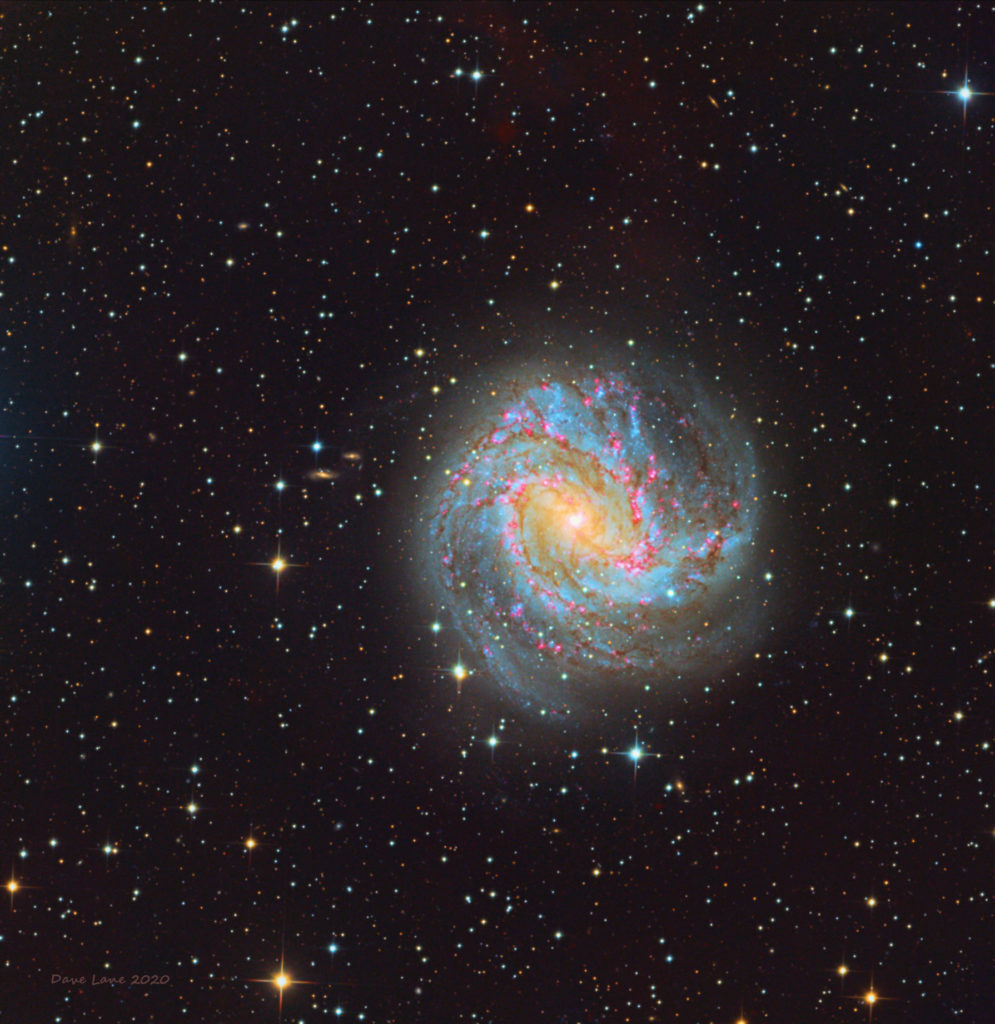Sky Report May 18 – May 24

This week there are two planets in the evening sky: Venus, which has been brilliant all winter and which is leaving us, and Mercury, much fainter, which is making a brief appearance. Venus will guide you to Mercury.
To find Venus, look a bit to the right of due west as the sky is growing dark. You can see Venus even before sunset if you know where to look, but at 9 p.m. on Monday the 18th it’s only about 16 degrees high. The width of your fist held at arm’s length is about 10 degrees, so you can estimate fairly well how near the true geometric horizon Venus is when it’s 16 degrees – one-and-a-half fist-widths — high. That’s quite low, so your view of it may well be blocked by hills. But Venus is significantly lower each evening, sinking at the rate of 1 degree per day, and on the 24th at 9 p.m. it’s only 9 degrees above the true horizon. Depending on what’s blocking your western view, you’ll last see Venus in the evening sky sometime this week.
What’s happening is that Venus is moving on an inside orbit around the sun, and it’s catching up to the slower-moving earth and passing us, moving from the left of the sun, when it appears in the evening sky, to the right of the sun, when it reappears in the morning sky.
While Venus is setting earlier each night and leaving the evening sky, little Mercury is rising higher this week and moving counter to Venus and into the evening sky. Mercury too is on an inside orbit, but it’s presently on the far side of the sun, and it will catch and overtake us too, but not until mid-June when it does the same disappearing act then that Venus is doing now. So the next two weeks are a good time to spot elusive Mercury.
To find Mercury, let much brighter Venus guide the way, and for all these dates remember that the width of your fist held at arm’s length is 10 degrees. Look at 9:15 p.m., before Mercury gets too low but while the sky is reasonably dark. On Monday the 18th Mercury is half-way between Venus and the true horizon and is too low for most people to see it. On Tuesday the 19th Mercury is 5 degrees below Venus. On Wednesday the 20th Mercury is 3 degrees straight below Venus. On Thursday the 21st they are in conjunction – at their closest; that’s the night when Mercury passes Venus. Then Mercury is only 1 degree to the lower left of Venus. On Friday the 22nd Mercury is almost 2 degrees to the upper left of Venus – another great night to look. On the 23rd Mercury is almost 4 degrees to the upper left of Venus, and on Sunday the 24th their separation has increased to 5½ degrees – still quite close. This is one of the better conjunctions of the year and your best chance to spot Mercury in the evening sky.
Note that Mercury is much smaller, is darker (less reflective), and is much more distant than Venus, so it appears much fainter. Although Mercury is as bright as the brightest stars, it is still only 1/27 as bright as Venus, so it may not be obvious in evening twilight and you might want binoculars.
If you have binoculars, turn them on Venus. If you hold them still enough by bracing your arm against something or put them on a camera tripod you might see that Venus has a very thin crescent shape. And from the 19th through 24th you can see Venus and Mercury at the same time.
By the way, I’m often asked to recommend binoculars for astronomy, and I’d start with cheap 7X50 which you can get at sporting goods stores and on-line for well under $50. Everyone should own a pair.
These two planets are in the evening sky while three others are in the morning sky. They are, from right to left (or west to east) Jupiter, Saturn, and Mars. The best time to look is at or just before 5 a.m. Jupiter is by far the brightest of the three, and it’s brighter than any star, so you’ll spot it immediately a third of the way up the southeastern sky. Saturn is a short distance (5°) to the left of Jupiter, and it’s as bright as the brightest stars so it too is obvious. Mars is slightly brighter than Saturn and it is quite a way — 40° — to the left of Jupiter and not as high in the sky.
Also in the morning sky, Comet SWAN is bright enough to see without binoculars, but it is so near the horizon during morning twilight that it will not be easy to spot. You’ll need a clear, unobstructed, northeastern horizon. Look for a tiny fuzzball just barely above the horizon as the sky is getting light, at about 5 a.m., and use binoculars if you have them. Good luck.
The Sky Report is presented as a public service by the Stellar Vista Observatory, a nonprofit organization based in Kanab, Utah, which provides opportunities for people to observe, appreciate, and comprehend our starry night sky. Additional information is at www.stellarvistaobservatory.org. Send questions and comments to John@StargazingAdventures.org.






Comments are closed.